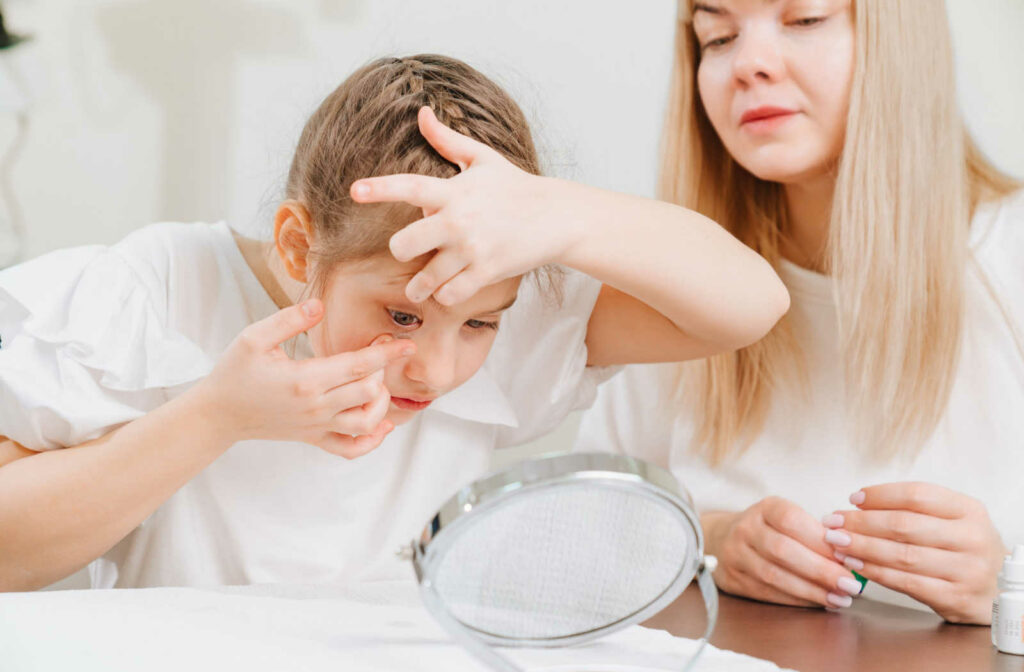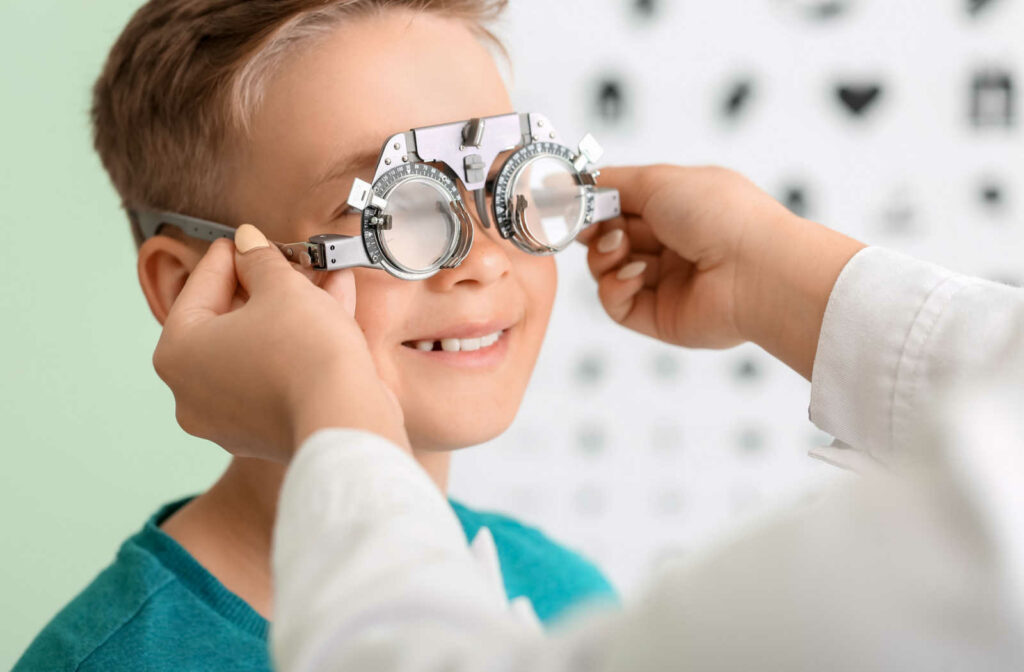Your child’s vision is precious, and many eye conditions can develop in childhood, putting it at risk. One of these conditions is myopia, a refractive error that can worsen with time. If your child has myopia, what causes this condition’s development?
Continue reading to learn more about myopia, including what it is and what causes this condition.
What Is Myopia?
Myopia is a common refractive error affecting millions worldwide. Approximately 40% of Americans have this condition, experiencing blurry vision when looking at close-up images.
Someone with myopia sees distant images clearly, while close-up objects look blurry. If you have myopia, you may experience:
- Blurry vision when looking at far away objects
- The need to squint to see clearly
- Headaches
Many people develop this condition in childhood. Myopia can progress with time, making an early diagnosis important for your child. Children may not realize they have a vision problem if they’re young—your child may assume everyone sees as they do.
Watch for symptoms of myopia in your child, such as:
- Squinting frequently to see
- Sitting close to the front of the classroom or television
- Having consistent headaches
- Focusing difficulties in school
- Holding books close to their face when they read
What Causes Myopia?
Someone with myopia has eyes that are shaped differently, causing light to bend wrong as it enters the eye. Either the eye is too long, or the cornea has a steep curve, making light land in front of the retina instead of on it. The result of this poor focus is blurry vision.
While experts haven’t identified the exact cause of myopia, research shows it may occur due to a combination of lifestyle and genetic factors, including:
Because children’s eyes grow as they do, there’s a risk of myopia progression as your child gets older.
What Is Myopia Progression?
Myopia tends to progress with time, causing it to worsen as your child grows. Myopia typically stabilizes in early adulthood, meaning your child’s vision may worsen for years if left untreated.
When myopia becomes more severe, it’s known as high myopia.
The Risks of High Myopia in Children
Someone has high myopia when they need -5.00 diopters of vision correction or more.
Besides worsened vision, high myopia increases the risk of several eye conditions, including:
While high myopia is concerning, it isn’t guaranteed to develop. Ensure you book regular eye exams for your child, so your eye doctor can identify problems before they cause further damage.
You can protect your child’s vision with help from your eye doctor through various myopia management and control methods. The current goal for myopia treatment is to prevent it from worsening.

Treating Myopia
Treating myopia involves more than single-vision glasses. Your eye doctor must correct and control this condition. Traditional myopia treatments correct vision but do not help prevent myopia progression.
Some potential treatment options for myopia include:
Atropine Eye Drops
Low-dose atropine eye drops are effective in slowing myopia progression in children. These eye drops relax the focusing mechanisms in the eye. Targeting the focusing muscles, atropine eye drops slow eye growth.
While these eye drops can help slow myopic progression, your child will still need glasses or contacts to correct their vision.
Orthokeratology (Ortho-K)
Orthokeratology (ortho-k) lenses are specialty contact lenses that reshape the cornea. Your child wears these rigid lenses overnight, allowing them to gently reshape the cornea and improve how light focuses on the retina.
Your child removes these lenses in the morning and enjoys clear vision without needing glasses. Ortho-k lenses are beneficial for myopia control, slowing progression by up to 56% in children.
Peripheral Defocus Contact Lenses
Research on myopia shows that blurring peripheral vision can help slow eye growth in children, protecting their sight. One way to do this is with peripheral defocus contact lenses.
These contacts are multifocal lenses, meaning they contain different prescriptions in a single lens. The design of the lens is similar to a bullseye—the center of the lens provides clear sight, while the outer rings help blur peripheral vision. Previous studies found multifocal contact lenses can slow myopia progression by 43% over 3 years.
Your eye doctor can help slow myopia progression, regardless of the chosen treatment. Your child doesn’t need to have a future of heavy prescriptions.
Protect Your Child’s Vision
Myopia can develop from a young age, progressing with time and worsening your child’s vision. While their sight can worsen, it doesn’t need to.
You can protect your child’s vision with the help of your eye doctor. They can recommend a customized treatment plan to help prevent this condition from worsening. Contact your optometrist at Pack & Bianes Optometry if your child has myopia symptoms or if it’s time for their next eye exam.



